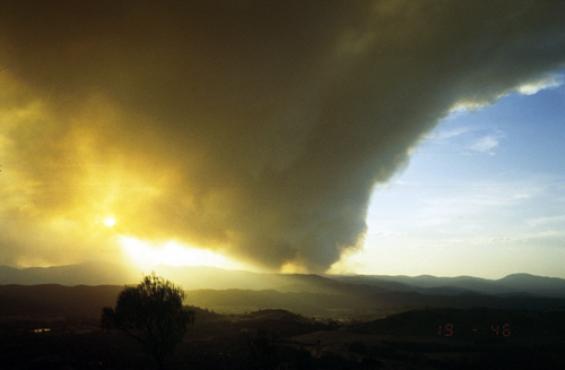Dry lightning as a cause of bushfire.
Fire Weather - Fire Danger

Meteorological data is fundamental to predicting fire danger and fire behaviour on timescales from seasonal to very short range. Seasonal factors affect fuel moistures and fuel availability while the variability on the very shortest time and space scales can cause marked variations in fire behaviour over very short distances or time intervals. Accurate fire weather forecasts can make all the difference to a community’s safety and to the overall success and wellbeing of firefighters and fire authorities in preparing for adverse fire weather.
This Bushfire CRC project aimed to improve the operational utility of fire weather forecasts and outlooks, by providing better knowledge and understanding of wind, temperature and humidity structures and distributions, on the very short term (one to 12 hours), short to medium term, and seasonal time scales.
The outcomes provide a range of forecast products tailored to the fire weather forecaster and based on hourly mesoscale numerical weather-prediction model output. These are available to forecasters nationally. These have included gridded weather and soil indexes for better fire weather forecasting; a better understanding of wind changes and links to “blow up” days; a better understanding of atmosphere stability impacts on fire behaviour with the Continuous Haines index; and breakthrough work on the nature of dry lightning.
A significant piece of research on climate change impacts on fire weather in south-east Australia for the Climate Institute has been extensively used in strategic planning and risk assessments by industry and governments.
The Bushfire CRC’s annual Bushfire Seasonal Outlook developed from this project. Each year before the northern and southern Australian fire seasons the Bushfire CRC brought together fire managers from all jurisdictions with Bureau of Meteorology scientists for a workshop.
The Queensland Fire and Rescue Service contributes considerable resources and importance to the workshop. Fergus Adrian, the manager of planning and research in Rural Operations said climate and fuel data gathered for the workshop is used in pre-season readiness activities including the timing of community awareness programs, briefing government, other fire and support agencies and contracting firefighting aircraft. “Importantly, on both a state and national level it provides an opportunity for fire agencies to appreciate resource demands such as intra and interstate assistance and to identify potential safety issues over the duration of the fire season.” he said.
In 2010, for the first time, a similar workshop was held in New Zealand. The final agreed seasonal outlooks are communicated in a Fire Note format and used by fire managers to harness resources for the upcoming seasons.



















